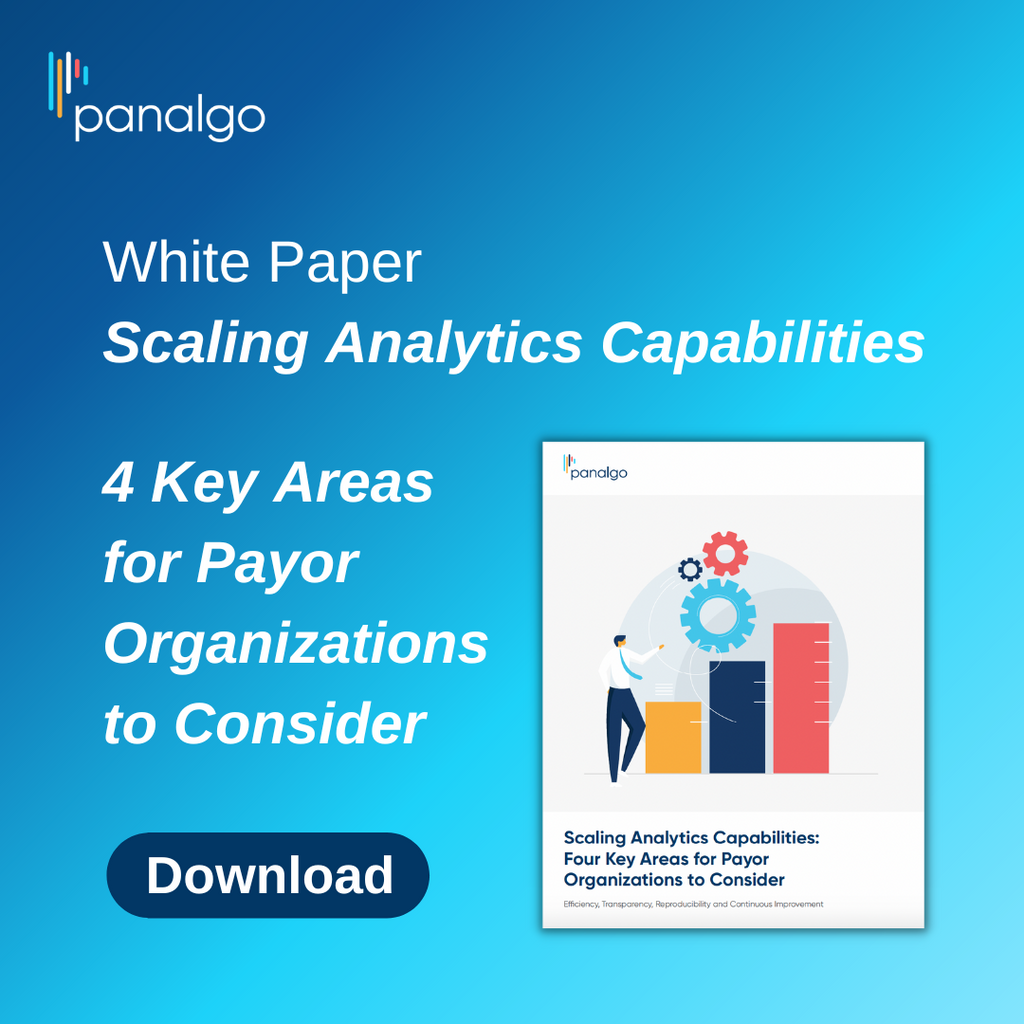Radar on Medicare Advantage
-
From RADV Audits to Utilization Concerns, Medicare Advantage Insurers Chart Uncertain Path
Since President Donald Trump’s return to the White House, CMS has been clear about its goals of rooting out fraud, waste and abuse. For Medicare Advantage organizations, that means an expansion of Risk Adjustment Data Validation (RADV) audits, which present operational burdens and potential financial implications for plans. But that’s just one key area of uncertainty that industry observers are watching in the second half of 2025. How can MA organizations keep calm and carry on?
“There is quite a lot of uncertainty in this market currently and as such, ‘carrying on’ should not mean doing the minimum when it comes to successfully operating an MA plan. Sitting idle in MA is not an option,” advises Julia Friedman, principal and consulting actuary with Milliman. “MAOs need to ensure they are well ahead of compliance and documentation, doubling down on quality and [Star Ratings] metrics, and investing in appropriate utilization management programs. Organizations that truly prioritize integration — both working through intra-departmental integration as well as externally pushing investments in integration of data-driven clinical, pharmacy, and provider relationships — will set themselves up for success.”
For the final issue of Radar on Medicare Advantage, we asked Friedman and other industry experts to weigh in on some of the biggest challenges and unknowns facing MA organizations going into 2026.
Will Utilization Trends Persist?
For starters, evolving utilization patterns are keeping insurers and their actuaries guessing. “We know that many organizations have seen elevated levels of inpatient utilization — will these continue?” Shortly after Centene Corp. withdrew its earnings guidance for the year, Molina Healthcare, Inc., on July 7 lowered its full-year outlook, citing ongoing medical cost pressures.
Meanwhile, specialty pharmacy trend among Medicare beneficiaries not receiving the low-income subsidy (i.e., non-low income) has consistently climbed since the first quarter of 2024, observes Milliman. Per-member per-month (PMPM) specialty drug spend for NLI members now exceeds $125, compared with around $80 at the end of 2023, according to Milliman MedIntel Insights. “Will we continue to see elevated levels of utilization and cost trend as the year progresses?” asks Friedman. “Both are critically important for MAOs (and their associated PBMs) to properly manage from an aggregate spend perspective.”
Moreover, as CMS begins requiring insurers to issue midyear notifications to enrollees of their unused supplemental benefits, questions remain as to whether this will lead to increased utilization of over-the-counter allowances and other flexible benefits. Pointing to recent “benefit activation” efforts by Walmart Inc. — through partnerships with Nations Benefits and Soda Health — NCD CEO Sam Melamed says MA carriers are often unaware of these efforts and may need to price that into their future bids.
“Benefit activation is a huge buzzword these days, and this year and next will see real utilization spikes on some of the benefits that MA carriers and brokers have been marketing heavily, but are often not used,” predicts Melamed in a LinkedIn post. “This Walmart effort is just one of many examples of technology being used to make members aware of what they have and to reduce the friction in using the benefits. SunFire and other platforms are also focused on helping drive more benefit activation.”
Meanwhile, “[s]mart brokers who want to have above market retention are putting in more effort to helping their clients appreciate and utilize their benefits,” he points out. For example, many brokers are helping members set up their dentist appointments, which leads to increased dental utilization, says Melamed.
Are ‘Easy Days’ of Supplemental Benefits Over?
“I remain convinced that supplemental benefits are going to continue to change in a meaningful way as the easy days of high marketing value with low utilization are going away. Meanwhile, it's another thing for healthcare investors to watch and ask on the MA earnings calls,” Melamed writes.
As plans consider which supplemental benefits to invest in, National Association of Dental Plans Executive Director Mike Adelberg reminds them of the importance of dental benefits. “As consumer research shows again and again, dental is the most important supplemental benefit in influencing beneficiary elections,” he points out. “There’s also a rich body of research showing that good oral health is important to managing several chronic diseases. That’s why plans invest in rich dental benefits.”
As some of these headwinds play out, industry observers are also watching for shakeups in the 2026 MA landscape and wondering if it will be a repeat of 2025, when insurers made strategic service area reductions or exited MA altogether.
“Financial pressures are mounting for many organizations in MA, and I believe that we will see additional exits coming in the next few months,” predicts Friedman. “Maybe more of a 2026 issue, but I for one am curious to see how different organizations decided to pivot in the face of mounting headwinds and broad industry discussions about prioritization of margin.”
Additionally, the MA Value-Based Insurance Design model, which sunsets later this year, enabled Dual Eligible Special Needs Plans (D-SNPs) to offer nonuniform benefit packages that provided access to benefits like food and utilities, we well as reduced or $0 Part D cost sharing. Friedman says it will be interesting to see how MAOs respond with their 2026 benefit offerings, particularly since D-SNPs relied on that model to enhance their Part D benefits.
And while the cancelation of the VBID model leaves no CMMI models involving MA, one model worth watching is the Transforming Episode Accountability Model (TEAM), point out Kirk Twiss and Stephen Wood of Clear View Solutions, LLC. From Jan. 1, 2026, through Dec. 31, 2030, more than 700 acute care hospitals in selected Core-Based Statistical Areas will have to accept bundled payments — based on geographic averages and risk adjustments — for five surgical procedures and 30 days post-discharge care provided to fee-for-service Medicare beneficiaries, including those in accountable care organizations. This will require a new level of coordination between the hospitals and post-acute providers, primarily skilled nursing facilities, that care for beneficiaries after the qualifying event.
Savings targeted by CMS will vary by episode and largely come from post-acute care costs, Twiss and Wood explain. Participating hospitals that demonstrate efficiencies will share in the savings, but those that underperform will have to cover the deficit.
If the model ultimately demonstrates value in bundling payments for the five procedures, it would become standard in traditional Medicare. And if MA plans don’t adopt a similar model, “the cost shift is going to come from somewhere else,” advises Wood.
All Eyes Are On October
In the meantime, industry observers eagerly await Oct. 1, when plans begin marketing their products for the 2026 Annual Election Period (AEP), which runs from Oct. 15 through Dec. 7.
“I think that what we’ll see on October 1 should be fascinating in terms of how much the plans pull back or, did they want to stay aggressive in trying to build on enrollment growth that they probably didn’t plan for last year?” asks John Selby, president of Rebellis Group.
During the 2025 AEP and in recent months, multiple insurers have eliminated commissions on certain products to limit new enrollment. Such activity does not violate current marketing rules, but it appears to be happening more frequently and has led groups like the National Association of Benefits and Insurance Professionals to call for restrictions on enrollment suppression tactics.
“CMS has never required plans to market actively or to pay compensation, but we’ve seen over the last couple of years where plans are [pulling back] on paying commissions for certain types of products, and this year it seems it’s gotten a lot more widespread. So this is something CMS could speak to, either in rulemaking or just to say, ‘We don’t think this is a good idea’ and [suggest] voluntary compliance,” observes Helaine Fingold, member of the law firm Epstein Becker Green. “We’ll see what happens with 2026. It will be interesting to monitor, if we’re able to, what the impact is for those plans that have cut compensation and see where that enrollment goes. And that just gives CMS a little more reason to act on that.”
“We’ve said all along that we think 2026 will be as chaotic as 2025, but in a different way, and I think we still hold that position,” adds Selby. “There’s no doubt that there are plans that are struggling financially, [with] very high MLRs, and obviously that ties to trend. Whether they’ve figured out the ‘why’ of that doesn’t seem to have been solved for and so, only with time and more data will they be able to figure out what happened. And they certainly didn’t have that insight when they were doing their bids” for 2026, which were submitted in June.
As a result, some plans may have shied away from establishing Chronic Condition Special Needs Plans (C-SNPs) for 2026, as their focus was on the core MA business. C-SNP enrollment has nearly doubled and as of June was nearing 1.3 million lives, although it is heavily concentrated within just three large carriers, according to George Dippel, president of Deft Research. In a recent LinkedIn Post, Dippel suggests that some insurers may look to C-SNPs as a “way to move current members with qualifying conditions into coverage that ought to improve health outcomes and lower costs down the road. For others, marketing C-SNP may be a way to attract new members throughout the year who have a sense of agency over their health futures, and thus may be more adherent and compliant — also bettering MLRs in the long-term.” C-SNPs may also reach dual eligible members but come with fewer restrictions than highly integrated and fully integrated Dual Eligible SNPs, he points out.
“Regardless of the rationale” for offering C-SNPs, the market is “woefully underpenetrated,” writes Dippel. “If it is advantageous for carriers to have more members in C-SNP for the aforementioned reasons (or for a litany of others), sooner or later the void will be filled by carriers who have already figured out how to make C-SNP work.”
And with the annual notice of intent due in November and applications for the next plan year filed in February, “it is not too early to start thinking about 2027 at all,” adds Selby, who expects to see continued C-SNP growth in 2026 and 2027.
Can CMS Meet Its RADV Audit Goals?
Meanwhile, the Trump administration is moving forward on conducting and expanding RADV audits, points out Friedman. “Will plans be able to pivot quickly to address the proposed timelines as well as accept the outcomes of the RADV audit process?”
In June, CMS notified 355 contracts of their selection for RADV audits to confirm the accuracy of medical records submitted for payment year 2019 through a review of sample enrollee data. That was after unveiling an aggressive plan to rapidly scale RADV audits, eventually expanding its annual audit capacity by more than 800% to cover approximately 550 MA contracts. To accomplish this, CMS said it intends to increase the number of medical coders, who manually review diagnoses that are at higher risk for overpayment, from 40 to approximately 2,000.
It is important to note that the 2018 audits mark the first year that CMS will apply its extrapolation methodology, which has been challenged in a lawsuit filed by Humana Inc. “If the sample meets certain standards and they extrapolate it to the [entire contract], it can be extremely significant depending on what they find in the sample,” says Fingold. Meanwhile, CMS’s plan to hire thousands of coders raises the question of how quickly the audits CMS intends to conduct can be completed. “CMS is only [starting to] look at the 2019 payment year and we haven’t closed the loop on previous payment years,” she points out.
Another potential unknown is whether the agency will revisit shelved plans to broaden the scope of marketing materials subject to review. That proposal, which was issued by CMS under former President Joe Biden, was one of several items excluded from the final 2026 MA and Part D rule released in April. Fingold says the proposal, which called for removing the so-called content standard, would not only be burdensome for plans and their third-party marketing partners but for the agency.
“The CMS oversight framework isn’t really structured for such a broad review, especially given the closure of multiple regional offices, so I think that’s something a lot of people are still monitoring,” she says. Meanwhile, plan sponsors are anxiously awaiting CMS’s proposed rule for the 2027 plan year, which could come out in November or December. Under new leadership, CMS “could use the ’27 rule to forge their own path…and decide how they want to approach what the Biden administration left on their plate,” remarks Fingold.
Meanwhile, in a study focused on misleading marketing practices in MA, the HHS Office of Inspector General has just announced it will review marketing-related complaints submitted to CMS between 2020 and 2024.

-
Timeline: The Evolution of Supplemental Benefits in Medicare Advantage
Starting next year, Medicare Advantage insurers will begin tracking enrollees’ usage of supplemental benefits and notifying them of unused benefits in the middle of the year, creating potential uncertainty about utilization in the second half of 2026. While the jury may still be out on whether supplemental benefits are improving outcomes or simply attracting enrollees, it’s clear that the evolution and expansion of non-medical benefits has been one of the most significant developments in recent program history. AIS Health, a division of MMIT, combed through its comprehensive archives to come up with a timeline of key events in the expansion of supplemental benefits.

-
House Introduces PBM Reform Package Targeting Medicare, Medicaid Markets
Although PBM reform measures wound up being cut from Republicans’ newly passed budget reconciliation legislation, 11 bipartisan Congress members on July 10 introduced a package containing PBM restrictions that some industry stakeholders hope can finally get across the finish line.
The PBM Reform Act contains many of the measures that were included — but then removed — from a year-end spending bill in 2024. Some of those provisions were later included in the House’s version of the “One Big Beautiful Bill Act,” but they were left out of the legislation that cleared the Senate.

-
News Briefs: Dual Eligibles in Fully Integrated Plans Tend to Stay Longer Than in Other Plan Types
Medicare-Medicaid beneficiaries enrolled in fully integrated Dual Eligible Special Needs Plans (FIDE SNPs) tend to disenroll from their plans less frequently than members of other Medicare Advantage plan types, according to new research. The cross-sectional study of 2.7 million dual eligibles published in JAMA Health Forum looked at Medicare enrollment data from 2021 and compared disenrollment rates for different plan types, including standard MA plans, coordination-only D-SNPs and D-SNP look-alike plans. Researchers found that of the dual eligibles enrolled in FIDE SNPs in 2021, 8.1% disenrolled by 2022. That’s compared to beneficiaries enrolled in coordination-only D-SNPs, D-SNP look-alikes, and standard MA plans in 2021, who had disenrollment rates of 18.3%, 30.5%, and 28.2%, respectively. Although researchers said they could not determine why FIDE SNPs had lower disenrollment rates compared with other plans, the findings “may indicate some benefit from the improved coordination and integration these plans offer for beneficiary experiences.” As policymakers consider ways to improve duals’ care, understanding “how FIDE-SNPs may be affecting patient care will be important moving forward,” they concluded.

-
Is Insurers’ Prior Authorization Pledge a PR Move or True Reform?
Amid mounting consumer, provider and lawmaker frustrations over insurers’ reliance on prior authorizations to control medical costs, a group of payers including major publicly traded companies recently unveiled a pledge to revamp their own PA practices before the federal government takes action. But industry experts say much of what they’re promising is already being mandated in federally sponsored health care programs, and it remains to be seen whether they’ll be ready to adopt these changes on the commercial side, let alone in Medicare or Medicaid.












